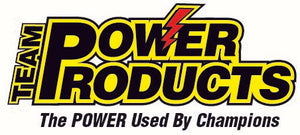Use this formula to calculate the overall gear ratio: Spur Teeth, divided by pinion teeth, times internal transmission ratio. The bigger the overall number, the lower the gear ratio will be. OK, you are at the track, you have a new motor, where do you start?
-
For this method to be accurate, you will need fans running on both the motor and ESC and measure the temperature as soon as you remove the car from the track. With fans running, the motor and ESC will cool quickly, making this test inaccurate.
-
Ask around to see if anyone has used a similar motor to use as a starting point (caution, comparing Team Power Products to other brands may result in gearing too high!), this will give you a baseline, a starting point. Make sure the gearing suggestion is based on the same internal transmission ratio you have. Serious damage will be done, for example, if you take the gear suggestion for a car with a 2.6 internal ratio when your transmission has a 2.4 internal ratio!
- Do not assume every motor will act the same way, even motor from same brand. Always play it safe, check the temp during your test phase!
OK, we are ready to do preliminary gear ratio testing:
- Put your car on the track, and as best you can, run at racing speeds for two continuous minutes, NO MORE! If the gearing is way off, we do not want to melt down the motor!
- Within 30 seconds, measure the motor temperature (at the timing end gives highest temperature) and ESC temperature. Use a non-contact temperature tool. I do not recommend using the touch method at this point! If you have an ESC which reports run data, this will be a good source also.
Armed with the temp information (Note: Consider a motor with a temp above 150 degrees as hot, an ESC with temp above 130 degrees as hot):
- Motor Temp: High - ESC Temp: High = The motor is geared too high for the track, decrease the pinion tooth count or increase spur gear size.
- Motor Temp: High - ESC Temp: Low = The motor is geared too low, increase pinion size or decrease spur gear size.
After a few trials, you will have the motor in a range you can now optimize for your car and this track. What I recommend, and with tires which have decent grip for the track (if the tires, diff, or slipper are slipping excessively, we will not be accurate with the gearing), is to listen for when the motor reaches its top speed on the longest straight. The motor should be at max RPM about 90% down this straight. Again, monitor motor temperature during your testing, measure every time you come off the track promptly.
We are not finished yet. This is where the driver will need to decide how the car pulls out of a variety of corners. If the car is lazy, reduce pinion tooth count one tooth and test again to see if acceleration is better. Check temperature.
Give this process a try and see if it improves your laps or car feel. And always measure that temperature!

